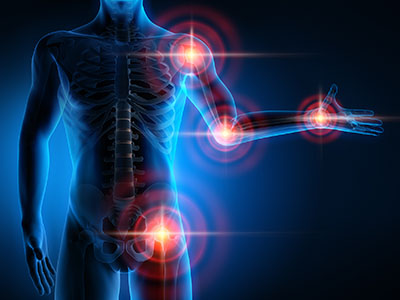
Our Office
Visit Us Online

Regenerative Injection Therapy (RIT) is a minimally invasive injection procedure that stimulates the body’s natural healing mechanisms to repair damaged ligaments and tendons using organic substances like blood plasma. RIT includes prolotherapy, platelet-rich plasma or PRP injection therapy, and other injections that help regenerate tissues.
RIT is not a new technique. The concept of irritating tissue to promote healing dates as far back as the ancient Greeks. Hippocrates treated Olympic javelin throwers with unstable shoulders by touching what he described as a “slender hot iron” to the ligaments holding the shoulder joint together. The heat would irritate the ligament capsule, causing it to tighten up. (Interestingly, modern-day orthopedic surgeons use heat probes and lasers to do the same thing surgically!)
Prolotherapy was used in France to treat hernias before modern surgical techniques became available. The techniques we use today were developed in the 1930s by G.S. Hackett, MD, a surgeon from Ohio, along with other MDs and DOs. The same techniques subsequently have been used successfully for pain relief from ligament laxity for nearly sixty years. Hackett coined the term “prolotherapy” because his initial work demonstrated that the new tissue laid down during the healing process was new healthy tissue, not scar tissue.
At CEPRM Center of Excellence in Pain & Regenerative Medicine, we use the healing capabilities of platelet-rich plasma to stimulate our patient’s natural healing process for regeneration, rejuvenation, and repair of joint injuries. RIT is a safe technique for treating those ligament and tendon injuries that have failed other conservative treatments. PRP injection therapy works best for chronic ligament and tendon sprains/strains that have failed other conservative treatment, including:
Human blood is made up of a number of components including red blood cells, white blood cells, serum, and platelets. Platelets are very important for clot formation. They stick to each other and form a blood clot. Medical research has found that platelets also contain a number of chemicals and proteins that are involved in wound healing. When platelets are activated, they release these components collectively called “growth factors.” When blood cells are separated from the blood, the resulting fluid is called plasma. The processing of plasma can concentrate the platelets and their corresponding growth factors.
A PRP injection is a concentrated solution of the patient’s own platelets that is mixed with a buffer and anticoagulant. This is then injected into the injured tissue to promote healing. In essence, the body’s own healing factors are injected back into the injured area. PRP injections have been used for years in surgical applications and wound care. The use of PRP for musculoskeletal injuries is fairly new and evolving into a promising treatment for both acute and chronic injuries. There are a number of medical studies supporting the use of PRP for tendon and ligament injuries.
Generally, a PRP injection requires an initial visit to see if the patient’s injury would benefit from the injection, then a follow-up visit for the injection itself. The actual injection process takes about 30 minutes. The majority of the time involves drawing and processing the patient’s blood for the injection.
There is then a 1 week and 4 weeks follow up appointment to access for healing and complications. After the initial treatment, a follow-up visit is scheduled 6-8 weeks later. Some people respond very well to just one treatment. However, typically 1-3 treatments are necessary.
You don’t have to suffer in pain when there are minimally invasive options available. Get back on your feet with little to no recovery time, with PRP injection therapy. Our experts are standing by and ready to assist you with all of your medical needs. Contact us today to learn more.

This site is not intended as a substitute for professional medical advice, diagnosis, or treatment. The content of this website, including texts, graphics, images, and information, is for informational purposes only. The information on this website should be verified with other sources and your licensed healthcare provider regarding any medical condition or treatment.
As with all medical procedures, our Procedures have a success and failure rate. The testimonials on this site are based on real-life experiences and opinions of patients. We do not claim or imply that our treatments work for everyone on this site based on patient reviews and testimonials. All users won't have the same experience, and you shouldn't assume that they will. Medical procedures can be successful and unsuccessful, so your results may vary. Therefore, testimonials on the site should not be construed as guarantees of treatment success.